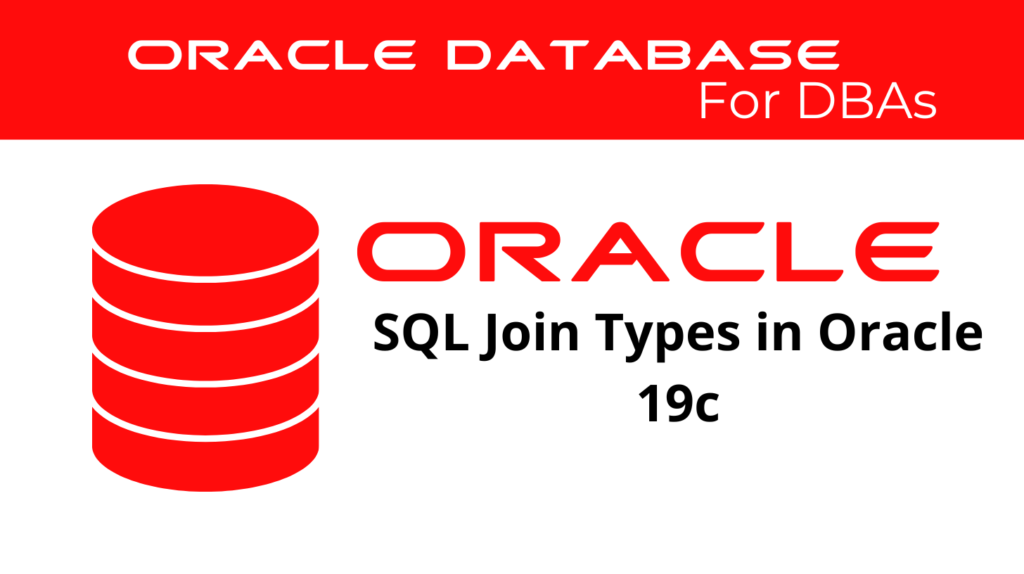
SQL joins are fundamental to relational database management systems. They allow us to retrieve data from multiple tables based on a related column. In Oracle 19c, various SQL join types are available to merge data effectively. Database joins allow querying multiple tables using join methods that dictate how the rows are combined. Mastering SQL join types is essential for writing efficient queries and optimizing performance.
What Are SQL Joins?
A join in SQL is a way to retrieve data from multiple tables by linking them through common keys. In relational databases, database joins ensure data consistency and avoid redundancy by using relationships between tables.
Why Are Joins Important?
- Data Integration: Helps merge data from different tables.
- Data Integrity: Ensures records match correctly.
- Performance Optimization: Reduces the need for multiple queries.
- Simplifies Querying: Allows retrieving structured data efficiently.
📢 You might also like: Oracle Database Career: How to become a most valuable Professional! (Category: Oracle Database Admin)
Types of SQL Joins in Oracle 19c
Inner Join – Retrieving Matching Data Only
An inner join returns rows where there is a match between the specified columns in both tables. Rows without a match are excluded.
Example: Fetching employees with their department names
SELECT employees.name, departments.department_name
FROM employees
INNER JOIN departments ON employees.department_id = departments.id;
Explanation
This query retrieves only employees who have a department. Employees without a matching department_id are excluded.
Example with WHERE Clause
SELECT e.name, d.department_name
FROM employees e
INNER JOIN departments d ON e.department_id = d.id
WHERE d.location = 'New York';
This query retrieves only employees working in New York.
Left Join – Including Unmatched Rows from Left Table
A left join (or left outer join) is a sql join type that returns all rows from the left table and the matching rows from the right table. If there is no match, NULL is returned for columns from the right table.
Example: Listing all employees, even those without a department
SELECT employees.name, departments.department_name
FROM employees
LEFT JOIN departments ON employees.department_id = departments.id;
Explanation
- Ensures all employees appear in the result.
- If an employee does not belong to a department,
NULLis displayed.
Right Join – Including Unmatched Rows from Right Table
A right join (or right outer join) retrieves all rows from the right table, but only the matching rows from the left table.
Example: Listing all departments, even those with no employees
SELECT employees.name, departments.department_name
FROM employees
RIGHT JOIN departments ON employees.department_id = departments.id;
Explanation
- Ensures all departments appear, even if no employees are assigned.
- Departments without employees will show
NULLforemployees.name.
Full Outer Join – Combining Both Left and Right Joins
A full outer join is a sql join type that returns all rows from both tables, filling NULL values where there is no match.
Example: Listing all employees and departments, even those without relationships
SELECT employees.name, departments.department_name
FROM employees
FULL OUTER JOIN departments ON employees.department_id = departments.id;
Explanation
- Retrieves all employees and all departments.
- If an employee has no department,
NULLis returned. - If a department has no employees,
NULLis returned.
Cross Join – Generating Cartesian Products
A cross join returns the Cartesian product of two tables. This means every row from the first table is combined with every row from the second table.
Example: Pairing all employees with all departments
SELECT employees.name, departments.department_name
FROM employees
CROSS JOIN departments;
Explanation
- Generates all possible combinations.
- If
employeeshas 10 rows anddepartmentshas 5 rows, the result contains 50 rows.
SQL Self Join Type – Joining a Table with Itself
A self join is a sql join type that allows a table to be joined to itself. It is useful for hierarchical relationships.
Example: Finding employees and their managers
SELECT e1.name AS Employee, e2.name AS Manager
FROM employees e1
JOIN employees e2 ON e1.manager_id = e2.id;
Explanation
- Uses table aliases (
e1ande2). - Employees are matched to their managers using
manager_id.
Advanced Join Techniques in Oracle 19c
Using Hash Joins
A hash join is used for large datasets where a hash table is built on one table and matched against another.
Example
SELECT e.name, d.department_name
FROM employees e
HASH JOIN departments d ON e.department_id = d.id;
Benefit
- Ideal for large datasets.
Using SQL Nested Loop Joins Type
A nested loop is a sql join type useful when one table is small and the other is large.
Example
SELECT e.name, d.department_name
FROM employees e, departments d
WHERE e.department_id = d.id;
Benefit
- Efficient when one table is significantly smaller.
Using Merge Joins
A merge join is a sql join type and used when both tables are sorted on the join condition.
Example
SELECT e.name, d.department_name
FROM employees e
MERGE JOIN departments d ON e.department_id = d.id;
Benefit
- Useful for sorted datasets.
Optimizing SQL Joins Types in Oracle 19c
To improve performance, follow these best practices:
- Use Indexes – Indexes speed up join conditions.
- Filter Data Early – Use
WHEREclauses to reduce row count before joining. - Optimize Join Order – The order of table joins affects performance.
- Avoid Redundant Joins – Remove unnecessary joins.
- Use EXPLAIN PLAN – Analyze query execution plans.
Conclusion
Mastering SQL join types is essential for writing optimized queries in Oracle 19c. Different database joins serve different purposes:
- Inner joins: Retrieve only matching rows.
- Left joins: Include all rows from the left table, even without a match.
- Right joins: Include all rows from the right table, even without a match.
- Full outer joins: Combine all rows from both tables.
- Cross joins: Generate Cartesian products.
- Self joins: Allow a table to join with itself.
By understanding SQL join techniques, developers can optimize data retrieval, improve query execution, and enhance database performance.
See more on Oracle’s website!
Be Oracle Database Certified Professional, this world is full of opportunities for qualified DBAs!





